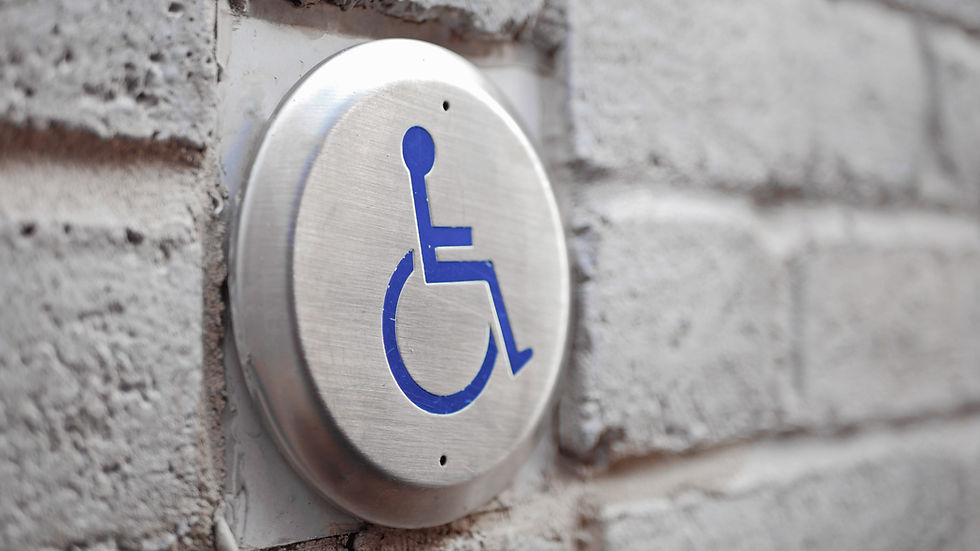
The Americans with Disabilities Act (ADA) was established to prohibit discrimination against individuals with disabilities, ensuring they have equitable access to public spaces, services, and opportunities. While business owners and organizations are committed to providing inclusive environments, there are instances where they might face lawsuits for non-compliance.
For businesses—small and large—understanding the potential defenses in ADA cases is paramount. Developing a strong legal strategy not only helps protect against costly litigation but also reinforces a business's commitment to accessibility and inclusivity. This guide will walk through the landscape of ADA lawsuits, key defenses available, and practical steps for safeguarding your organization.
Understanding the ADA Lawsuit Landscape
ADA lawsuits have been on the rise in recent years, particularly targeting businesses that have not adequately addressed physical accessibility or digital accessibility concerns.
ADA Lawsuit Trends
According to ADA Title III litigation reports, the number of lawsuits filed increased by 14% in 2022, totaling more than 11,400 cases in the United States. This trend shows no signs of slowing down as awareness around accessibility continues to grow.
A notable portion of these lawsuits involves digital accessibility issues, particularly on websites and mobile applications. Businesses often receive demand letters or lawsuits claiming that key web functionalities are inaccessible to users with disabilities.
Common Non-Compliance Issues
Some of the most frequent reasons businesses face ADA lawsuits include:
Physical Barriers: Non-compliant entrances, inadequate parking spaces, inaccessible bathrooms, and missing signage in facilities.
Digital Barriers: Websites that are incompatible with screen readers, lack keyboard navigation, or fail to meet Web Content Accessibility Guidelines (WCAG).
Operational Barriers: Failures to accommodate reasonable requests, such as providing auxiliary aids or services for customers with disabilities.
Understanding the reasons for such claims helps businesses take proactive measures before issues escalate into legal disputes.
Available Defenses in ADA Cases
While ADA compliance is a legal obligation, there are defenses available for businesses when allegations arise. Below, we explore key defenses and their requirements.
A. Safe Harbor Defense
The Safe Harbor provision under the ADA offers protection for businesses in specific scenarios.
What is Safe Harbor? It refers to properties or elements that complied with the original ADA standards when constructed (such as those before March 15, 2012). If these remain unchanged, they may qualify under the Safe Harbor provision.
Criteria for Safe Harbor: To claim this defense, businesses must prove the property was compliant with the ADA standards in place at the time of construction or renovation. For example, physical structures built to fit the 1991 ADA Accessibility Guidelines may not require updates immediately unless altered after 2012.
While Safe Harbor can provide relief in certain cases, it is not a blanket exemption for all properties or facilities. Ongoing audits are still essential.
B. Undue Burden Defense
Another defense is the Undue Burden clause, which applies when remediation imposes an unreasonable level of difficulty or expense.
Defining Undue Burden: This refers to actions that would require excessive financial or operational strain compared to the resources available to the organization. This defense is most relevant for small businesses or nonprofits with limited budgets.
Factors Considered: Courts evaluate several aspects, including the size of the business, its financial resources, the cost of remediation, and whether alternative accommodations could be made.
For example, a small boutique with tight margins may argue that extensive renovations requiring structural changes are financially infeasible, as long as they provide reasonable alternatives such as curbside assistance for affected customers.
C. ADA Compliance Efforts
One of the strongest defenses a business can present in ADA cases is proof of proactive compliance efforts.
Why Compliance Matters: Demonstrating that a business has made ongoing, documented efforts to comply with ADA standards builds credibility in court and may reduce penalties.
Steps to Strengthen Compliance: This includes conducting regular accessibility audits, training staff on ADA requirements, and maintaining upgrade records.
Proactive action does not just mitigate risk—it positions the business as a leader in inclusivity and accessibility, which can have positive public perception benefits.
D. Current Legal Landscapes and Precedents
Analyzing recent legal decisions can help shape defense strategies.
Case Study – Domino’s Pizza LLC (2019): Domino’s was sued for the inaccessibility of its website to blind customers. The court ruled that websites must be accessible under Title III of the ADA, providing clarity on digital accessibility obligations for businesses.
Impact: Businesses can use precedents like these to anticipate potential areas of risk, particularly around website compliance, and adapt accordingly.
Understanding evolving legal interpretations ensures that businesses remain ahead of compliance challenges while preparing defenses if necessary.
Practical Steps for Businesses to Protect Themselves
Building an inclusive and ADA-compliant operation should not be an afterthought—it’s a proactive process. Here are tangible steps every business can take.
Conduct Accessibility Audits
Regularly review your business—both physical and online. Identify barriers to access and address them systematically. Tools like accessibility checkers and professional audits can help pinpoint issues.
Stay Updated on ADA Guidelines
The ADA can evolve, particularly as digital accessibility takes center stage. Subscribing to federal or advocacy group updates ensures your understanding grows alongside the standards.
Document Compliance Actions
Keep detailed records of every accessibility improvement your business makes. Courts view good-faith efforts positively, even if some barriers remain due to financial constraints.
Partner with Accessibility Experts
From legal advisors to ADA consultants, forming a relationship with experts can make compliance straightforward. Many professionals also offer training programs to help your staff better understand the law.
Why Proactive ADA Compliance Matters
While ADA lawsuits pose risks for businesses, compliance represents far more than legal obligation. Accessibility aligns with broader societal values, enhances brand reputation, and opens doors to an underserved customer segment—individuals with disabilities.
By being proactive, seeking guidance, and understanding available defenses, businesses can limit exposure while setting themselves up as leaders in inclusivity.
If your business needs assistance with any of these issues, contact our law firm today.

Comentarios